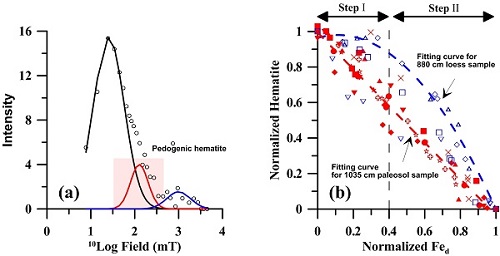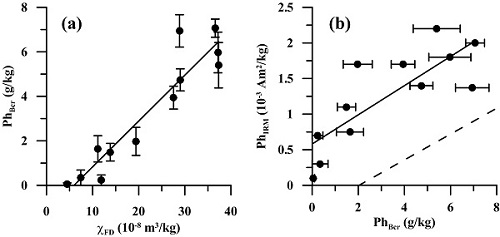Ph.D. student HU Xiangpeng and her teacher utilize a comprehensive approach by integrating isothermal remanent magnetization (IRM) decomposition analysis, dynamic citrate–bicarbonate–dithionite (CBD) dissolution, low temperature IRM technology, and diffuse reflectance spectroscopy (DRS) to accurately quantify the relationship between ferromagnetic and antiferromagnetic minerals in Chinese loess.
Their results suggest that single domain pedogenic hematite was produced after initial formation of pedogenic maghemite. This provides direct evidence for the recently proposed pathway in which ferrihydrite is transformed into a transient maghemite-like phase before its final transformation into hematite.

Fig.1. Dissolved iron, Fed, as a function of concentration of goethite (a); concentration of hematite (b). (Image by HU)

Fig. 2. Quantification of pedogenic hematite: (a) concentration indicator of pedogenic hematite PhBcr against χFD; (b) relationship between PhIRM and PhBcr, dashed line represents the case when SP hematite are largely produced initially. (Image by HU)
Hu et al. Characterizing and quantifying iron oxides in Chinese loess/paleosols: Implications for pedogenesis. Earth and Planetary Science Letters, 2013, 369-370: 271-283(Download Here)